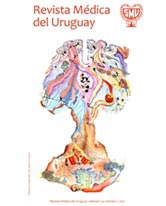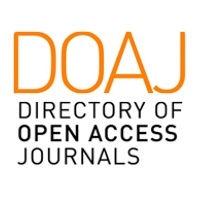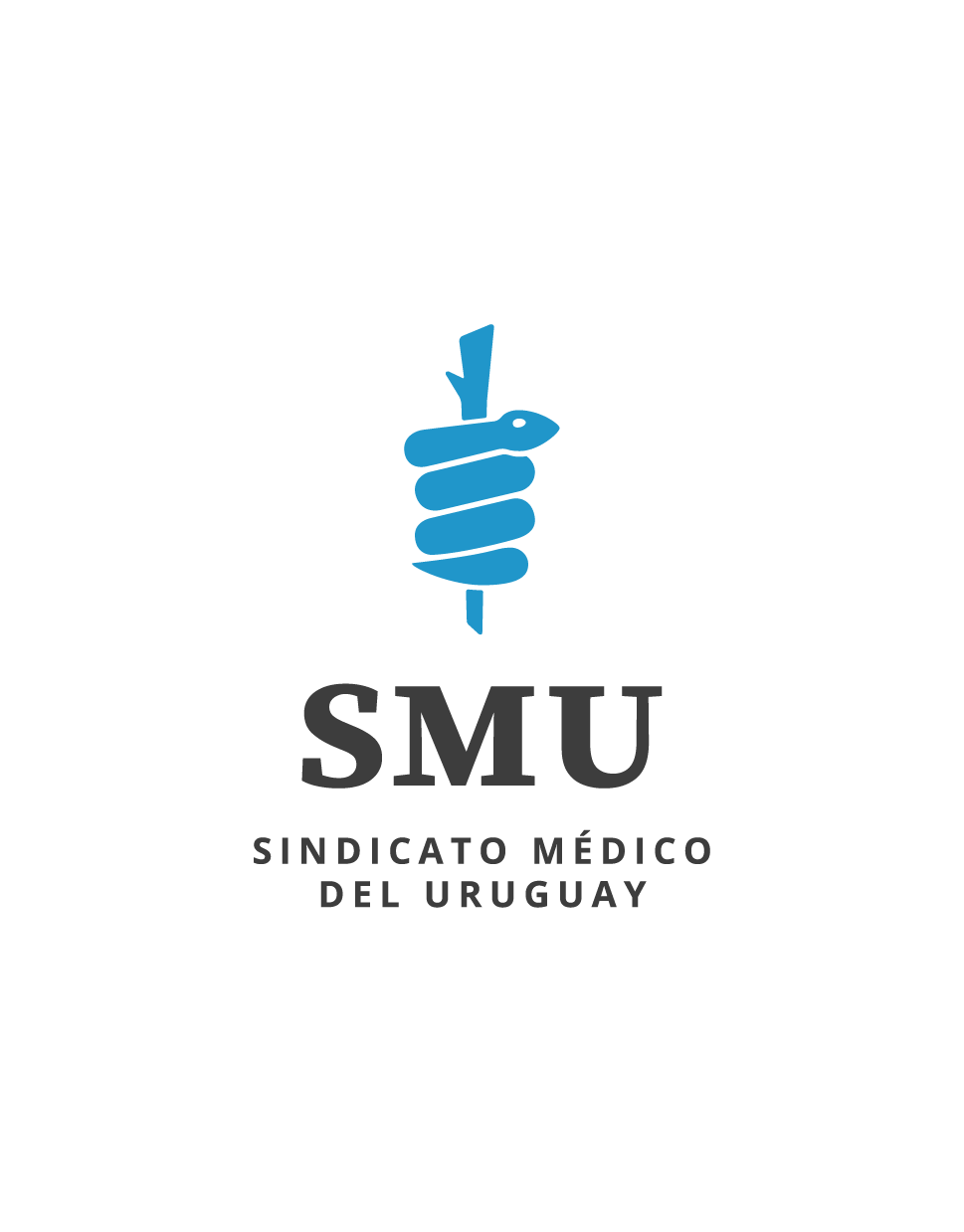Antimicrobial resistance alarm
current situation and challenges
Abstract
The recent increase of antimicrobial resistance is a compelling problem that may compromise the health of future generations and result in us going back to the pre-antibiotic era, unless it is battled on time. In order to face this threat, global health organizations called countries to articulate new strategies to fight against antimicrobial resistance, by encouraging them to adopt a health centered approach that involves different actors and institutions. This report provides updated information, explaining the reasons why antimicrobial resistance is no longer a medical dilemma but rather a complex phenomenon that also affects agricultural and livestock production and the development and economy of countries. Antibiotic exposure contributes to the selection of resistant mutants and favors the horizontal transference of mobile genetic elements (MGE) such as plasmids, integrons and transposons, which carry several resistance genes against antibiotic families. Antibiotic therapy, still in justified situations, exerts selective pressure that favors the predominance of resistant bacteria mutants, and thus infections need to be avoided by optimizing hygiene conditions and relying on immunization. Also, alternative therapies are tried, as those based on bacteriophagists or probiotics. The Global Action Plan proposed by the WHO, the World Organization for Animal Health and the FAO to control antimicrobial resistance comprises five goals: to improve awareness and knowledge on antimicrobial resistance; to strengthen surveillance and research; to reduce the incidence of infection; to optimize the use of antimicrobial agents and to ensure a lasting funding that guarantees the continuation of control actions.
References
(1) World Health Organization. The evolving threat of antimicrobial resistance: options for action. Geneva: WHO, 2012. Disponible en: http://apps.who.int/iris/bitstream/10665/44812/1/9789241503181_eng.pdf. Consulta: 8 junio 2017.
(2) Organización Mundial de la Salud. Resistencia a los antibióticos. Ginebra: OMS, 2016. Disponible en: http://www.who.int/mediacentre/factsheets/antibiotic-resistance/es/. Consulta: 8 junio 2017.
(3) Organización Mundial de la Salud. Plan de acción mundial sobre resistencia a os antimicrobianos. Ginebra: OMS, 2015. Disponible en: http://www.who.int/antimicrobial-resistance/global-action-plan/es/. Consulta: 8 junio 2017.
(4) King LJ, Anderson LR, Blackmore CG, Blackwell MJ, Lautner EA, Marcus LC, et al. Executive summary of the AVMA One Health Initiative Task Force report. J Am Vet Med Assoc 2008; 233(2):259-61.
(5) Saleem AF, Ahmed I, Mir F, Ali SR, Zaidi AK. Pan-resistant Acinetobacter infection in neonates in Karachi, Pakistan. J Infect Dev Ctries 2009; 4(1):30-7.
(6) Centers for Disease Control and Prevention. Antibiotic resistance threats in the United States, 2013. Atlanta, GA: CDC, 2014. Disponible en: https://www.cdc.gov/drugresistance/threat-report-2013/index.html. Consulta: 8 junio 2017.
(7) Laxminarayan R, Duse A, Wattal C, Zaidi AK, Wertheim HF, Sumpradit N, et al. Antibiotic resistance-the need for global solutions. Lancet Infect Dis 2013; 13(12):1057-98.
(8) O´Neill J. Tackling drug-resistant infections globally: final report and recommendations. The review on antimicrobial resistance. London: AMR, 2016. Disponible en:
https://amr-review.org/sites/default/files/160518_Final%20paper_with%20cover.pdf. Consulta: 8 junio 2017.
(9) Schwaber MJ, Klarfeld-Lidji S, Navon-Venezia S, Schwartz D, Leavitt A, Carmeli Y. Predictors of carbapenem-resistant Klebsiella pneumoniae acquisition among hospitalized adults and effect of acquisition on mortality. Antimicrob Agents Chemother 2008; 52(3):1028-33.
(10) World Health Organization. Global priority list of antibiotic-resistant bacteria to guide research, discovery and development of new antibiotics. Geneva: WHO, 2017. Disponible en: http://www.who.int/medicines/publications/global-priority-list-antibiotic-resistant-bacteria/en/. Consulta: 8 junio 2017.
(11) Yong D, Toleman MA, Giske CG, Cho HS, Sundman K, Lee K, et al. Characterization of a new metallo-beta-lactamase gene, bla (NDM-1), and a novel erythromycin esterase gene carried on a unique genetic structure in Klebsiella pneumoniae sequence type 14 from India. AntimicrobAgentsChemother 2009; 53(12):5046-54.
(12) Uruguay. Ministerio de Salud Pública. Departamento de Laboratorios. Detección de enterobacterias productoras de carbapenemasas (EPC). Montevideo: MSP, 2013. Disponible en: http://www.msp.gub.uy/publicaci%C3%B3n/detecci%C3%B3n-de-enterobacterias-productoras-de-carbapenemasas-epc. Consulta: 8 junio 2017.
(13) General Assembly of United Nations. 71st session. Press release: high level meeting on antimicrobial resistance. New York: UN, 2016. Disponible en: https://www.un.org/pga/71/2016/09/21/press-release-hl-meeting-on-antimicrobial-resistance/ Consulta: 8 junio 2017.
(14) World Bank Group. Final Report: drug-resistant infections. A threat to our economic future. Washington, DC: World Bank, 2017. Disponible en: http://documents.worldbank.org/curated/en/32331149339 6993758/pdf/114679-REVISED-v2-Drug-Resistant-Infections-Final-Report.pdf. Consulta: 8 junio 2017.
(15) Baquero F, Nombela C. The microbiome as a human organ. ClinMicrobiol Infect 2012; 18(Suppl 4):2-4.
(16) Baquero F. From pieces to patterns: evolutionary engineering in bacterial pathogens. Nat Rev Microbiol 2004; 2(6):510-8.
(17) Bhullar K, Waglechner N, Pawlowski A, Koteva K, Banks ED, Johnston MD, et al. Antibiotic resistance is prevalent in an isolated cave microbiome. PLos One 2012; 7(4):e34953.
(18) Davies J, Davies D. Origins and evolution of antibiotic resistance. MicrobiolMolBiol Rev 2010; 74(3):417-33.
(19) Liu B, Pop M. ARDB: Antibiotic Resistance Genes Database. Nucleic Acids Res 2009; 37:D443-7.
(20) Baker-Austin C, Wright MS, Stepanauskas R, McArthur JV. Co-selection of antibiotic and metal resistance. Trends Microbiol 2006; 14(4):176-82.
(21) Humeniuk C, Arlet G, Gautier V, Grimont P, Labia R, Philippon A. Beta-lactamases of Kluyveraascorbata, probable progenitors of some plasmid-encoded CTX-M types. AntimicrobAgentsChemother 2002; 46(9):3045-9.
(22) Hortal M, García Gabarrot G. Enfermedades infecciosas emergentes en Uruguay: memorias del siglo XX. An Fac Med Montev 2016; 3(2):7-23.
(23) Levy SB. The antibiotic paradox: how the misuse of antibiotics destroys their curative powers. 2 ed. Cambridge, MA: Perseus Books Group, 2002.
(24) García Gabarrot G, López Vega M, Pérez Giffoni G, Hernández S, Cardinal P, Félix V, et al. Effect of pneumococcal conjugate vaccination in Uruguay, a middle-income country. PLoS One 2014; 9(11):e112337.
(25) Macfarlane J, Holmes W, Macfarlane R, Britten N. Influence of patients' expectations on antibiotic management of acute lower respiratory tract illness in general practice: questionnaire study. BMJ 1997; 315(7117):1211-4.
(26) Grigoryan L, Haaijer-Ruskamp FM, Burgerhof JG, Mechtler R, Deschepper R, Tambic-Andrasevic A, et al. Self-medication with antimicrobial drugs in Europe. Emerg Infect Dis 2006; 12(3):452-9.
(27) Rodríguez Baño J, Paño Pardo JR, Álvarez Rocha L, Asensio A, Calbo E, Cercenado E, et al. Programa de optimización de uso de antimicrobianos (PROA) en hospitales españoles: documento de consenso. EnfermInfeccMicrobiolClin 2012; 30(1):22e1-23.
(28) Uruguay. Ministerio de salud Pública. Ordenanza 417/000: venta de antibióticos bajo receta profesional. Montevideo, 7 de julio 2000.
(29) Lloyd DH. Reservoirs of antimicrobial resistance in pet animals. Clin Infect Dis 2007; 45(Suppl 2):S148-52.
(30) Mellon M, Benbrook C, Lutz Benbrook K. Hogging it: Estimates of antimicrobial abuse in livestock. Cambridge, MA: Union of Concerned Scientists, 2001. Disponible en: http://s3.documentcloud.org/documents/330307/jan-2001-hogging-it.pdf. Consulta: 8 junio 2017.
(31) World Health Organization. Regional Office for Europe. Tackling antibiotic resistance from a food safety perspective in Europe. Copenhagen: WHO, 2011. Disponible en: http://apps.who.int/medicinedocs/documents/s18396en/s18396en.pdf. Consulta: 8 junio 2017.
(32) Liebana E, Carattoli A, Coque TM, Hasman H, Magiorakos AP, Mevius D, et al.Public health risks of enterobacterial isolates producing extended-spectrum beta-lactamases or AmpC beta-lactamases in food and food-producing animals: an EU perspective of epidemiology, analytical methods, risk factors, and control options. Clin Infect Dis 2013; 56(7):1030-7.
(33) Castanon JI. History of the use of antibiotic as growth promoters in European poultry feeds. PoultSci 2007; 86(11):2466-71.
(34) Cogliani C, Goossens H, Greko C. Restricting antimicrobial use in food animals: lessons from Europe banning nonessential antibiotic uses in food animals is intended to reduce pools of resistance genes. Microbe 2011, 6(6):274-9.
(35) Landers TF, Cohen B, Wittum TE, Larson EL. A review of antibiotic use in food animals: perspective, policy, and potential. Public Health Rep 2012; 127(1):4-22.
(36) Pulcini C, Bush K, Craig WA, Frimodt-Møller N, Grayson ML, Mouton JW, et al; ESCMID Study Group for Antibiotic Policies. Forgotten antibiotics: an inventory in Europe, the United States, Canada, and Australia. Clin Infect Dis 2012; 54(2):268-74.
(37) Liu Y-Y, Wang Y, Walsh TR, Yi LX, Zhang R, Spencer J, et al. Emergence of plasmid-mediated colistin resistance mechanism MCR-1 in animals and human beings in China: a microbiological and molecular biological study. Lancet Infect Dis 2016, 16(2):161-8.
(38) Cisek AA, Dbrowska I, Gregorczyk KP, Wyzewski Z. Phage therapy in bacterial infections treatment: one hundred years after the discovery of bacteriophages. CurrMicrobiol 2017; 74(2):277-283.
(39) Whitman WB, Coleman DC, Wiebe WJ. Prokaryotes: the unseen majority. ProcNatlAcadSci USA 1998; 95(12):6578-83.
(40) Seija V, Balsamo A, Palacio R, Menéndez M, Batista N, Calata L, et al. Lecciones aprendidas en el estudio y diagnóstico de la infección por Clostridiumdifficile en el Hospital "Manuel Quintela". En: Academia Nacional de Medicina. Gran Premio Nacional de Medicina. Montevideo, Uruguay, 8 de diciembre de 2016.
(41) Mead GC. Prospects for 'competitive exclusion' treatment to control salmonellas and other foodborne pathogens in poultry. Vet J 2000; 159(2):111-23.
(42) Brandt LJ. Fecal transplantation for the treatment of Clostridium difficile infection. GastroenterolHepatol 2012; 8(3):191-4.
(43) Torres Manrique C. La resistencia bacteriana a los antibióticos, siete décadas después del Fleming. Zaragoza: Colegio Oficial de Farmacéuticos, 2012. Disponible en: http://www.academiadefarmaciadearagon.es/docs/Documentos/Documento48.pdf. Consulta: 2 julio 2017.

This work is licensed under a Creative Commons Attribution-NonCommercial 4.0 International License.













